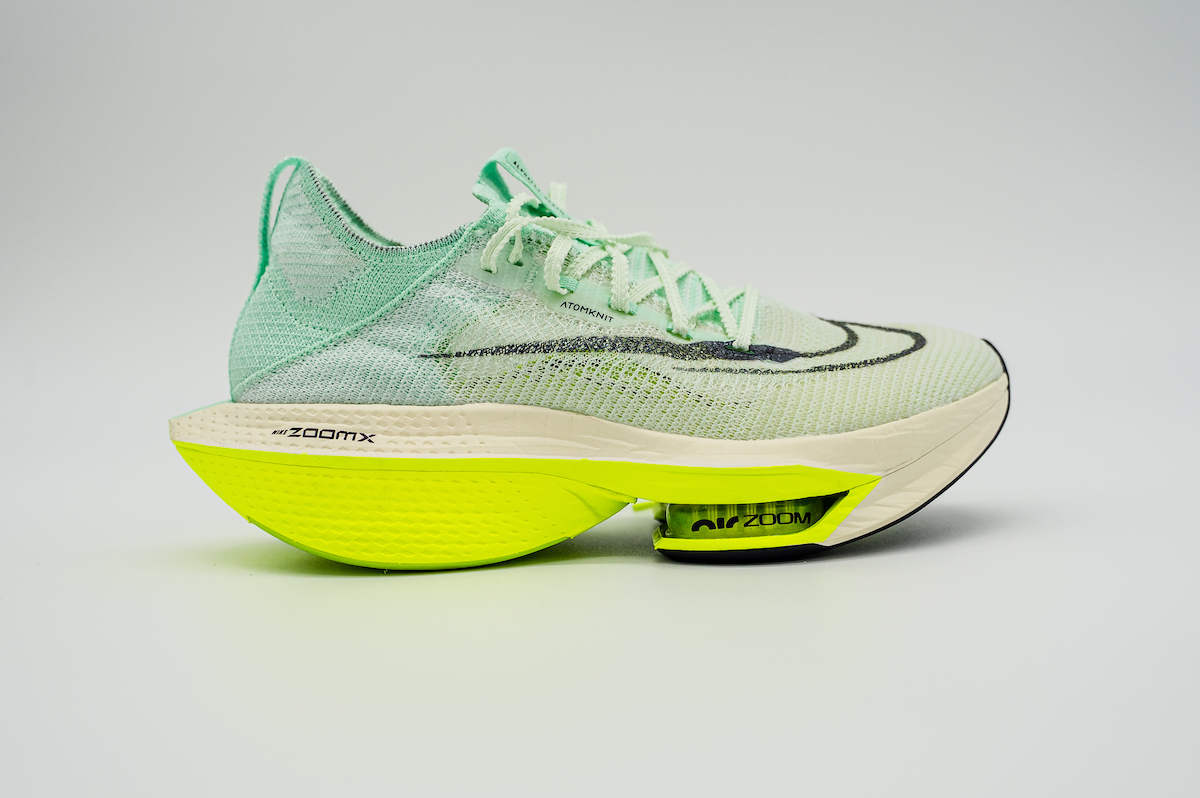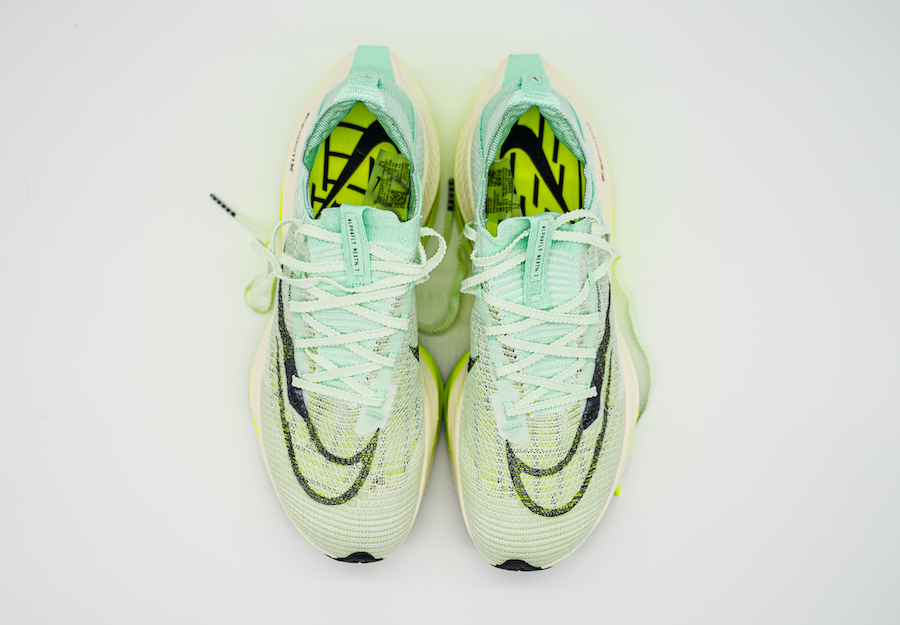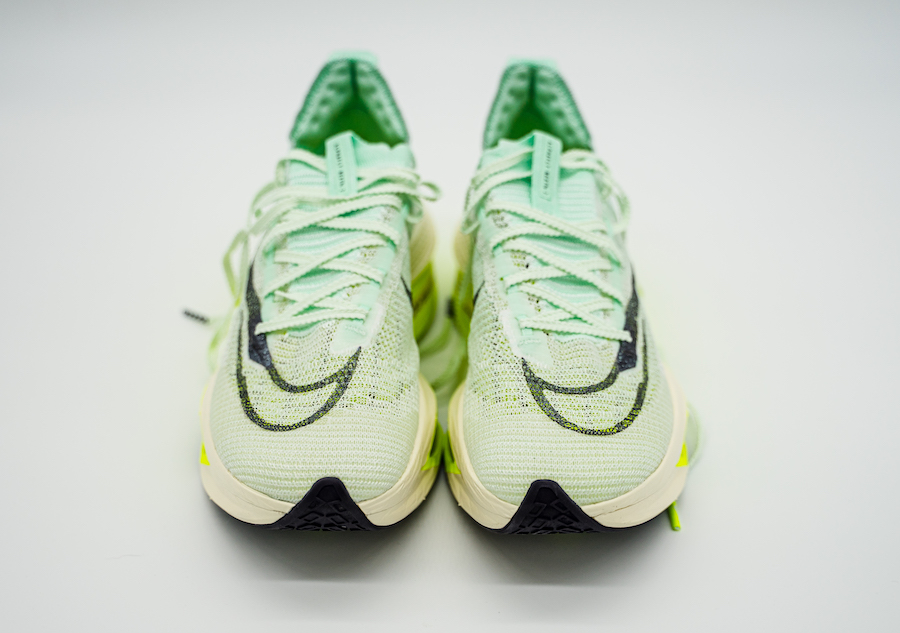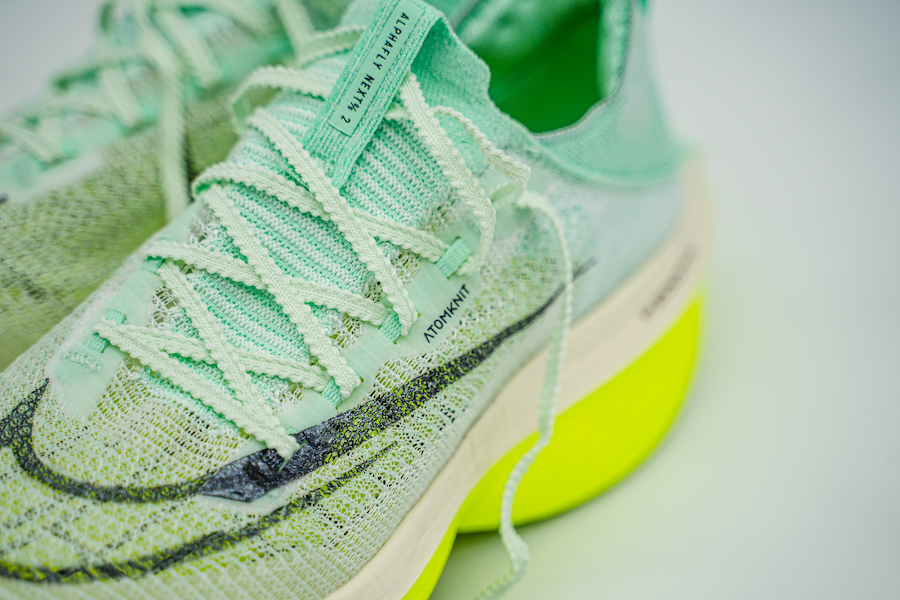

When we broke the patent of the original Alphafly right before Eliud Kipchoge’s INEOS 1:59 project a couple years ago, it sent shockwaves through the run industry. What was this shoe with a huge-ass midsole, dual airbags, and one, possibly two– maybe even three!– carbon plates? After all, the patent had all of those designs.
The final version of the Alphafly was, of course, much more shoe-like and less trampoline-like, but nevertheless, it was a revolution in running. And nothing spoke to that revolution more than Kipchoge taking to the streets in Austria as he became the first human to run a sub-2-hour marathon. Since then, Kipchoge has oscillated between the Alphafly and the Vaporfly on race day (he wore the Vaporfly when he won gold at the Tokyo Games and the Alphafly 2 in his win at the Tokyo Marathon this year), but the Alphafly has stood on plenty of podiums on other athletes’ feet.
For the Believe in the Run team, the Alphafly has been the race day shoe of choice for most of us since its inception. Meg has consistently lowered her marathon PR to 2:49 and swears by the Alphafly on race day, while Brandon cruised to a 2:41 in his debut marathon wearing the shoe. So obviously we were incredibly excited to see what has changed or what hasn’t, in this genre-defining shoe.

Changes, in a shoe you absolutely love, are always met with some initial skepticism. Do we really have to try and fix something that ain’t broke? In the case of the Alphafly Next% 2, the changes appear to be minimal, which we’re totally okay with.
Let’s get this out of the way first– the Alphafly Next% 2 is built around the ethos of democratizing the most elite racing shoe for all runners (except for that pesky price point, of course). That means what was once a premium racing shoe found at the front of a race on primarily those sub-3 marathoners is now a shoe meant for the 4-hour, 5-hour, and 6-hour marathoners. Nike literally said they were focused on “improving the racing experience for all runners chasing their personal best.”

As such, the tweaks in the shoe were meant to level the playing field a bit. Or at least to play on the playing field. So what exactly does that mean?
For starters, the heel was widened to help improve stability and help with transitions. Translation: the heel is designed to provide more comfort and stability for heel strikers or those struggling to hold form later in a race). In the same way, a bit more foam was added beneath the Zoom Air pods for a bit more energy return and a smooth transition. Lastly, the Atomknit 2.0 upper offers more of a wrap on the foot, with additional breathability in the toe box. A knit padding under the laces provides some added comfort.

We’ve only got one run in the shoe so far, so stay tuned for the full review coming soon. That said, we do have some first thoughts after a few miles.
Let’s just get straight to the point: The shoe still feels amazing. Nothing was supremely altered, so fans of the first Alphafly should be just as enamored with this version.
That said, this is one of the heaviest (possibly the heaviest) road racing shoe on the market. We would usually call that out, especially if it feels block or heavy underfoot, but the last version was just a touch lighter. In comparison, the Vaporfly is almost 20% lighter (1.5 ounces) in a size US M10.5. Similar premium racing shoes like the Adidas Adios Pro 3 and Asics Metaspeed Sky+ weigh about a half-ounce less as well.

Despite the weight, we really don’t feel it underfoot. The barely-legal stack of ZoomX still cruises and propels you into a quickened pace that’s both comfortable and effortless. A more structured upper provides better security and fit while extra padding under the lacing allows for a very secure lockdown without the typical lace pressure. Quite honestly, it may be the best fitting upper of any racing shoe out there (aside from maybe the Saucony Endorphin Pro+).
We should point out that the Alphafly Next% 2 has moved to an 8mm drop from a 4mm drop in the first version. What does that mean? Well, the heel stack was already maxed out at the 40mm World Athletics limit in v1 and you know they’re not taking that down, especially since this is the shoe for which rules were made in the first place. Back to the stack height difference– simple math would show that to get an 8mm drop you’re going to have to eliminate 4mm of foam somewhere in the forefoot. Which probably explains the decision to put a small sliver beneath the Zoom Air units. It would also explain why Meg found the shoe to be a bit firmer than last year. Will that matter at mile 22 in a marathon for midfoot strikers? It remains to be seen, but it’ll be an interesting experiment.
On the run, that 8mm drop tips you a bit forward onto the toes but not so much that it changes the overall feel of the shoe. Now, the insole is glued into the shoe, and if it’s not glued perfectly it can create some problems (as we found when Thomas came home with a sizeable blood blister after his first run). However, Nike is always good about providing replacements in the case of a small defect like that, so they should take care of it.
If you recall, version one also had a medial arch support (this is also found in shoes like the React Infinity 3) that was a bit obtrusive but seemed to go away once the shoe was broken in. That may be the case with the Alphafly 2 as well but Thomas and Meg both found it to be more pronounced in this version. Time will tell if that goes away, but we wanted to point it out.

If you were big fans of the first Alphafly, you’re probably going to love this one as well. The adjustments made to the upper and the additional width in the heel will also make this a shoe that any runner of any experience level can confidently use on race day.
Although June 15 was the official release date for the “proto” version of the shoe, it appears that a wide release has been delayed but will likely happen in the coming weeks. Keep an eye out for that, and be sure to check back for our full, in-depth review within that same time frame.

Want to learn more about how our review process works? Check out this guide.
Have something to say? Leave a Comment
Just so y’all know: all the glued-in insoles can be removed perfectly as long as you haven’t strengthened the adhesion by running in them. Just have to be a bit careful to not tear the insole foam. I remove all my insoles and shoelaces for every single pair of shoes and readjust them myself before use. Recent Nike running shoes that have glued-in insoles with sizing labels attached to them are a must-fix.
Thanks for the tip!
Thanks for the review. I was hoping they would have revisited the high arch support, which made version one unwearable for me. I guess old guys with flattened arches aren’t Nike’s target audience!
Running warehouse has this colorway on sale now.